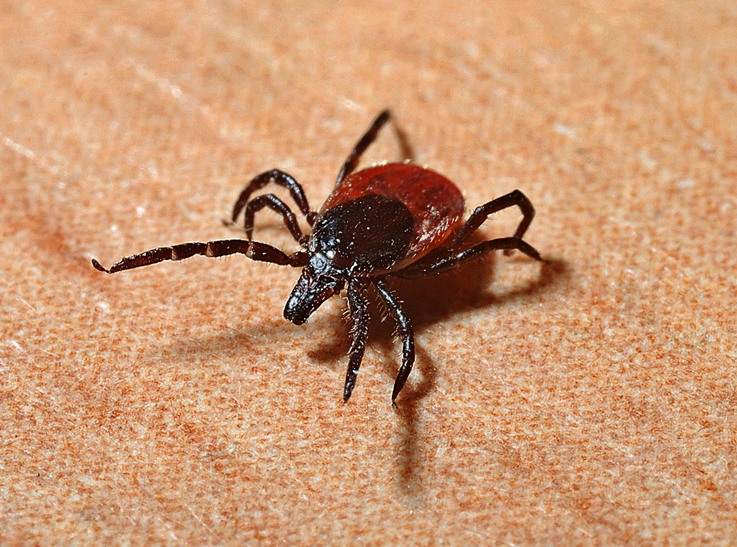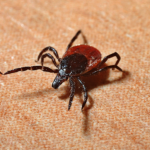Cheyenne, WY (RELEASE) April 19th, 2024 — With tick season quickly approaching, the Wyoming Department of Health says simple steps can help state residents protect themselves and their family members from potentially serious tick-borne illnesses.
Courtney Tillman, an epidemiologist with WDH, said past records show people typically start seeking medical help due to tick bites in May. Diseases sometimes spread by infected ticks in Wyoming include tularemia, Rocky Mountain spotted fever (RMSF) and Colorado tick fever (CTF).
Tularemia symptoms include fever, swollen and painful lymph glands, inflamed eyes, sore throat, mouth sores, skin ulcers and diarrhea. If the bacteria are inhaled, symptoms can include sudden onset of fever, chills, headache, muscle aches, joint pain, dry cough, progressive weakness and pneumonia. Initial RMSF symptoms may include fever, nausea, vomiting, muscle pain, lack of appetite and severe headache. Later signs and symptoms may include rash, abdominal pain, joint pain and diarrhea. CTF usually causes fever, headache, muscle and joint pain and, occasionally, a rash.
“If you have symptoms of tick-borne illness, it’s important to let your healthcare provider know if you have been in a tick area, have handled live or dead animals, or have traveled out of state,” Tillman said.
People can be exposed to ticks when walking through, playing or sitting in brushy and grassy areas, or when handling certain animals.
Steps to help avoid tick-related diseases include:
- Apply insect repellents registered with the Environmental Protection Agency, such as those containing 20 percent or more DEET and/or picaridin.
- Treat outdoor clothing and gear with products containing 0.5 percent permethrin.
- Avoid brushy areas with high grass. When hiking, walk in the center of trails.
- Upon returning from potentially tick-infested areas, shower and search self and children for ticks, and remove if found.
- To kill ticks on dry clothing, tumble dry on high heat for 10 minutes after being in tick areas. If clothes require washing, use hot water.
- Check pets for ticks; use tick control products recommended by veterinarians.
- Carefully handle live or dead potentially infected animals such as rabbits and rodents.
- Always follow product instructions when using permethrin and insect repellents.
Tillman noted WDH tularemia, RMSF and CTF web pages each include a “tick bite assessment” tool, which demonstrates the proper way to remove an attached tick and describes when to seek healthcare after a tick bite.
“Lyme disease is a topic of interest nationally, which can be a serious threat in some locations. However, the ticks that spread Lyme disease are not known to live in Wyoming,” Tillman said.
Information from WDH about tick-borne illnesses, along with other infectious diseases, can be found at https://health.wyo.gov/publichealth/infectious-disease-epidemiology-unit/disease/.









